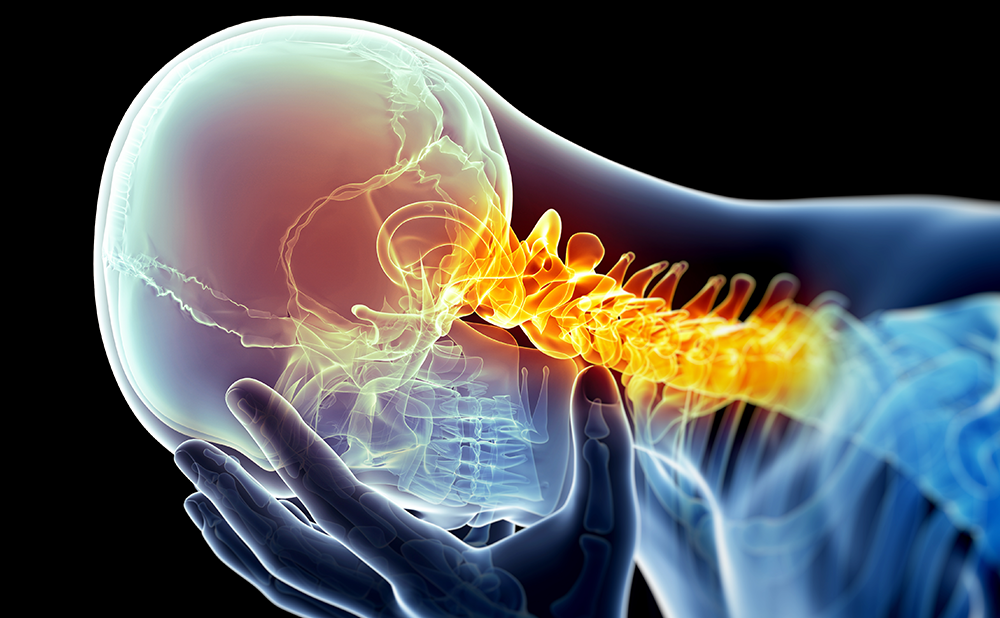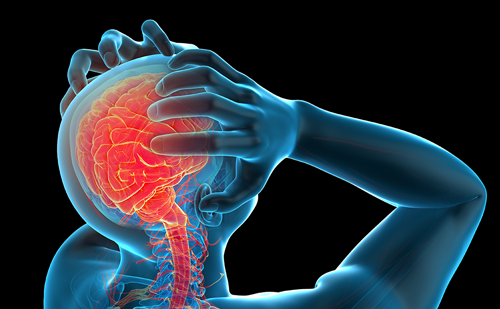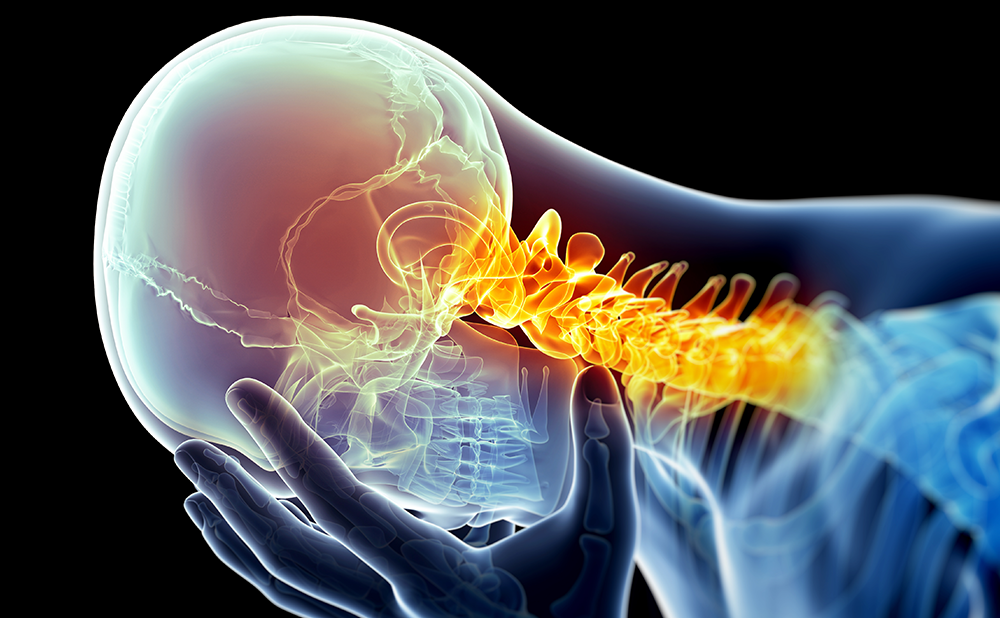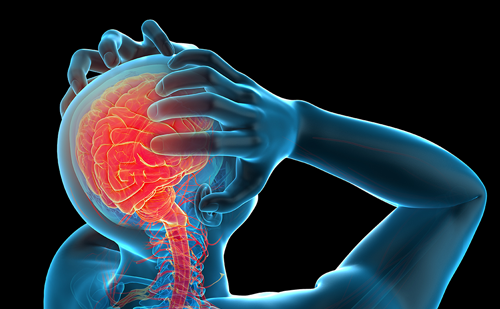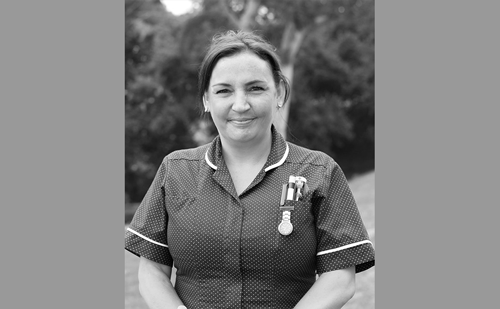The bipolar spectrum tends to be underdiagnosed, with the full clinical spectrum being an evolving concept. The mild end of the bipolar spectrum (bipolar II, cyclothymia, bipolar not otherwise specified (NOS)) is often missed. It is likely that 4% (or more) of the general population suffers from the bipolar spectrum.8 As bipolar complicates treatment in a variety of ways, the clinical stakes for missing bipolar are enormous. Bipolar and migraine share common genetic links and both are multifactorial in origin.
Methods
One thousand two hundred consecutive migraine patients, 275 cluster patients, and 292 patients with chronic tension headache without migraine were evaluated. They were all patients at our headache center. The diagnoses were based on criteria set down by the International Headache Society (IHS).9 The evaluation was based on a chart review, a mood disorder questionnaire (MDQ),10 a patient health questionnaire (PHQ)-9, and interviews with patients and families. The inclusion criteria stipulated that the patients should be >20 years of age and that a diagnosis of migraine, cluster, or chronic tension headache (without migraine) should be made. The lifetime prevalence of bipolar was assessed, including the milder end of the spectrum.
Bipolar illness was defined according to the criteria established by the Diagnostic and Statistical Manual of Mental Disorders, Fourth Edition (DSM-IV).11 In addition, the modifications to DSM-IV by Akiskal were utilized in defining bipolar disorders.12,13 The following four conditions were defined according to the DSM-IV criteria.
Bipolar I disorder was defined when there had been at least one episode, currently or in the past, of true mania.
An assessment of bipolar II was made if there had been one or more major depressive episodes, plus at least one hypomanic episode, no mania or mixed episodes, and these episodes must have caused significant distress or impairment in patient functioning.
Cyclothymic disorder was defined as at least two years of numerous periods of hypomania and numerous episodes of depressive symptoms that do not meet criteria for major depressive episode. During the two-year period, the patient could not have been without the symptoms for more than two months at a time, and no major depressive episode, manic episode, or mixed episode could have been present during the first two years of the disturbance. These symptoms had to cause clinically significant distress or impairment in functioning and were not due to substance abuse or a medical condition. Bipolar disorder NOS was defined with additions according to Akiskal.12,13 Examples of patients included in this category are those with rapid alterations between manic and depressive symptoms that do not meet minimal criteria for a full manic episode or for a major depressive episode; recurrent hypomanic episodes without intercurrent depressive symptoms; a presence of a hyperthymic temperament as the prevalent, long-term functioning of the person; and the presence of a persistently agitated, angry, and moody personality (temperamental instability), particularly with a strong family history of bipolar disorder and/or a hypomanic reaction to an antidepressant (e.g. up all night, mind racing). Increased energy and lability of mood also were used as additional indicators of bipolarity. In addition, criteria that were considered in the diagnosis of the ‘softer’ end of the spectrum include: early onset of depression (prior to age 25 years, and certainly prior to age 17 years), atypical or psychotic depressive episodes, post-partum depression, and lack of response to three or more antidepressant trials.
Results
Migraine
One thousand two hundred consecutive migraine patients were evaluated according to DSM-IV guidelines. The results were as follows: bipolar I, 24; bipolar II, 28; bipolar NOS, 34; and cyclothymia, 17. Total bipolar spectrum for migraineurs was 103 (8.6% of the total).
Cluster
Two hundred and eighty-seven cluster headache patients were seen over 18 years. The episodic cluster cohort totalled 141. The results showed: bipolar I, two; bipolar II, four; bipolar NOS, one; and cyclothymia, two; the total episodic cluster was nine (6.4%). The chronic cluster cohort totalled 146: bipolar I, two; bipolar II, two; bipolar NOS, two; and cyclothymia, four. Total chronic was 10 (6.8%). Total bipolar spectrum for cluster patients was 19 (6.6% of the total).
Chronic Tension (without Migraine)
Two hundred and ninety-two patients with chronic tension type headache without migraine were evaluated. The results were: bipolar I, five; bipolar II, three; bipolar NOS, three; and cyclothymia, two. The total bipolar spectrum for chronic tension headache was 13 (4.5%).
Discussion
The bipolar spectrum is seen relatively often in headache patients, particularly among migraineurs.4,5 The clinical implications for not diagnosing bipolar are enormous, with the result that patients tend to move from antidepressant to antidepressant, with generally poor results, without being on adequate mood stabilizers. Accurate diagnosis of bipolar is crucial, because it is not an easy condition to treat or to deal with, for family members as well as the patient. Treatment with adequate mood stabilizers may help, but we are often left with less than desirable results. As is the case with headache preventatives, we need better medications for the bipolar spectrum. The clinical spectrum of bipolar is evolving. Mania is better recognized than is hypomania (with milder bipolar features). Symptoms of mania include euphoric mood, distractibility, flight of ideas, grandiosity, thoughtlessness or risk-taking, excessive involvement in pleasurable activities (e.g. sex, spending, gambling), pressured speech, an increase in activities, excited (or irritable) energetic mood, and insomnia.14 Milder hypomanias are often missed, particularly if one relies solely on the patient’s history; therefore, it is crucial to talk with a family member or significant other. Hypomania does not meet the full criteria for mania, but encompasses the same types of symptoms. In addition, brooding, irritable pessimism may be a manifestation of hypomania. During irritable, angry hypomanias many people will lose their jobs or damage relationships. A further complication is the stigma that ‘manic-depression,’ or bipolar carries: patients and families are often resistant to the diagnosis. Therefore, there is a need for literature that emphasizes the milder end of the spectrum, as well as major revisions of nomenclature for the condition.
The comorbidity of migraine with anxiety/depression and bipolar has previously been described.1–5 The lifetime prevalence of bipolar disorder is probably at least 4%.8 Previous studies have indicated that 7.2% (127,000 patients mail survey) to 8.6% (1,000 consecutive migraineurs) of migraine patients fit the bipolar spectrum.4,5 Conversely, in assessing those with bipolar spectrum disorder for migraine, several studies have indicated that there is an increased risk for migraine in the bipolar population.6,7 One study (n=36,984) indicated that, in the bipolar patients, 14.9% of the men and 34.7% of the women had a lifetime occurrence of migraine.7 Additional studies in the bipolar population resulted in a migraine lifetime prevalence of 39.87 and 44%, respectively.15,16
The therapeutic implications for recognizing bipolarity are enormous. Undiagnosed patients are often given antidepressants alone. While some may benefit from antidepressants, they are not particularly effective for the bipolar spectrum,17 and may trigger mania or hypomania.14 The therapeutic challenge for bipolar has been to find effective therapies for depression, as most patients primarily complain of the depression and fewer medications are effective for the depression than for the hypomania. Rational polypharmacy is often utilized. Lithium has a long, solid track record for the treatment of acute bipolar depression, but not for the prevention of depression.14 Lamotrigine has been beneficial for treating acute depression, as well as for prevention.14 Generally, it is fairly well tolerated and may help certain headache types as well. However, the small incidence of the serious drug rash (approximately 1:2,000 patients) has led to an underutilization of lamotrigine for bipolar depression.
Divalproex sodium has been effective for certain headache types, as well as for treating the depression associated with acute mixed mania. Its efficacy in preventing bipolar depression is less clear.
The atypical (second-generation) antipsychotics may be of benefit for some patients with bipolar depression, as well as treating the mania/hypomania.18 Quetiapine has the best data at present, but does carry at least a mild to moderate liability for the metabolic syndrome. While this class may help certain aspects of the bipolarity, the medications are probably most useful as adjuncts to lithium or the anti-epileptics.
The recognition of the bipolar spectrum is crucial if we are to effectively treat the patient with headaches.


